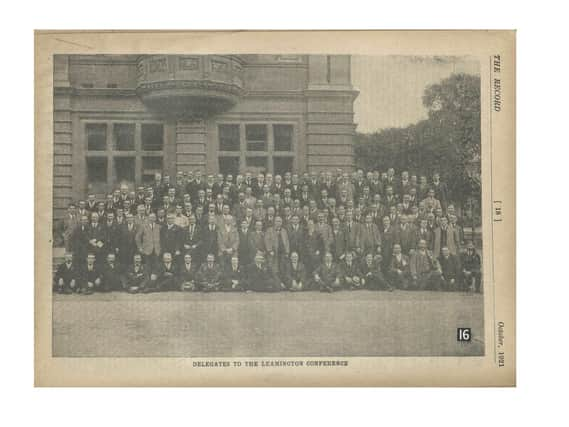How Leamington played host to a landmark moment for the labour movement 100 years ago


One hundred years ago this month, trade union representatives from across the country came together at Leamington to form the Transport and General Workers’ Union (TGWU). It was a landmark moment for the labour movement. The TGWU would go on to become the biggest trade union in the UK and an influential voice in British politics throughout the 20th century. On the centenary of its formation, Ben Richardson from the University of Warwick remembers the place of Leamington in this history.
100 years of the Transport and General Workers’ Union by Ben Richardson, University of Warwick
Advertisement
Hide AdAdvertisement
Hide AdThe TGWU was the brainchild of Ernest Bevin. As a leader in one of the dock workers’ unions, Bevin had seen how employers were able to keep wages down by playing one group of workers off against another. To mitigate this divide and conquer strategy, Bevin proposed an ambitious amalgamation of trade unions across a range of industries. Eleven unions representing 320,000 workers agreed to this proposal and met at Leamington Town Hall to determine the rules of their new organisation.
Leamington was chosen because of its central location given that delegates would be attending from all over Britain and Northern Ireland. A huge consultation exercise beforehand with the various branches of the amalgamating unions helped to ensure that an acceptable constitution was put forward. Nevertheless, some amendments to Bevin’s proposal were adopted at the conference. One of these was to make ‘control of industry by the workers’ a guiding object of the TGWU – a socialist principle intended to push the union into advocating for broader political change.
Unintentionally, it began this mission straight away in Leamington. During the conference local unemployed people had gathered next to the Bright Obelisk outside the Town Hall in protest at the immiserating level of poor relief. Conference delegates gave impromptu speeches to them about the ‘idle rich’ of Leamington, whilst the town’s newly-elected Labour Party councillor vowed to take up their cause with the Warwick Board of Guardians.
Following the successful conference at Leamington, the TGWU officially came into existence on January 1, 1922, with Ernest Bevin as its General Secretary. Two years later it led the first national stoppage in the history of the dock industry and in 1926 threw its weight behind the first (and last) general strike in solidarity with the coal miners. So important was the union that in 1940 Bevin was drafted into the war cabinet as Minister of Labour.
Advertisement
Hide AdAdvertisement
Hide AdTo commemorate the fiftieth anniversary of the TGWU, a ceremony was held in Leamington and a tree planted in Jephson Gardens by its General Secretary Jack Jones. By this point, the union had extended its membership into a number of Leamington’s employers including Lockheed, the Imperial Foundry, the Midland Red bus company and the Warneford Hospital. It is likely that some of these members would have been recruited by Jack Jones himself, who started his TGWU career in Coventry district.
The TGWU now no longer exists, having itself amalgamated with another trade union to form Unite. But the tree still stands in Jephson Gardens – a symbolic reminder of the union’s roots in Leamington.